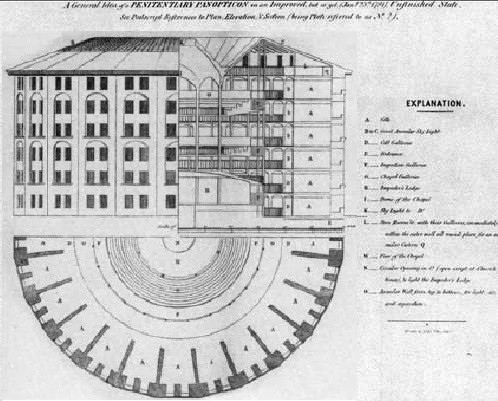Panopticism

Despite Bentham's humane intentions, 20th century philsopher Michel Foucault criticized the power-play of surveillance inherent to the structure: "the principle that power should be visible and unverifiable. Visible: the inmate will constantly have before his eyes the tall outline of the central tower from which he is spied upon. Unverifiable: the inmate must never know whether he is being looked at at any one moment; but he must be sure that he may always be so.". It was from this criticism that Foucault coined the term Panopticism.
This power dynamic might also be applicable outside of a physical prison or institutional setting, such as with the concept of fame or parasocial relationships.
This literary device appears in the following works: